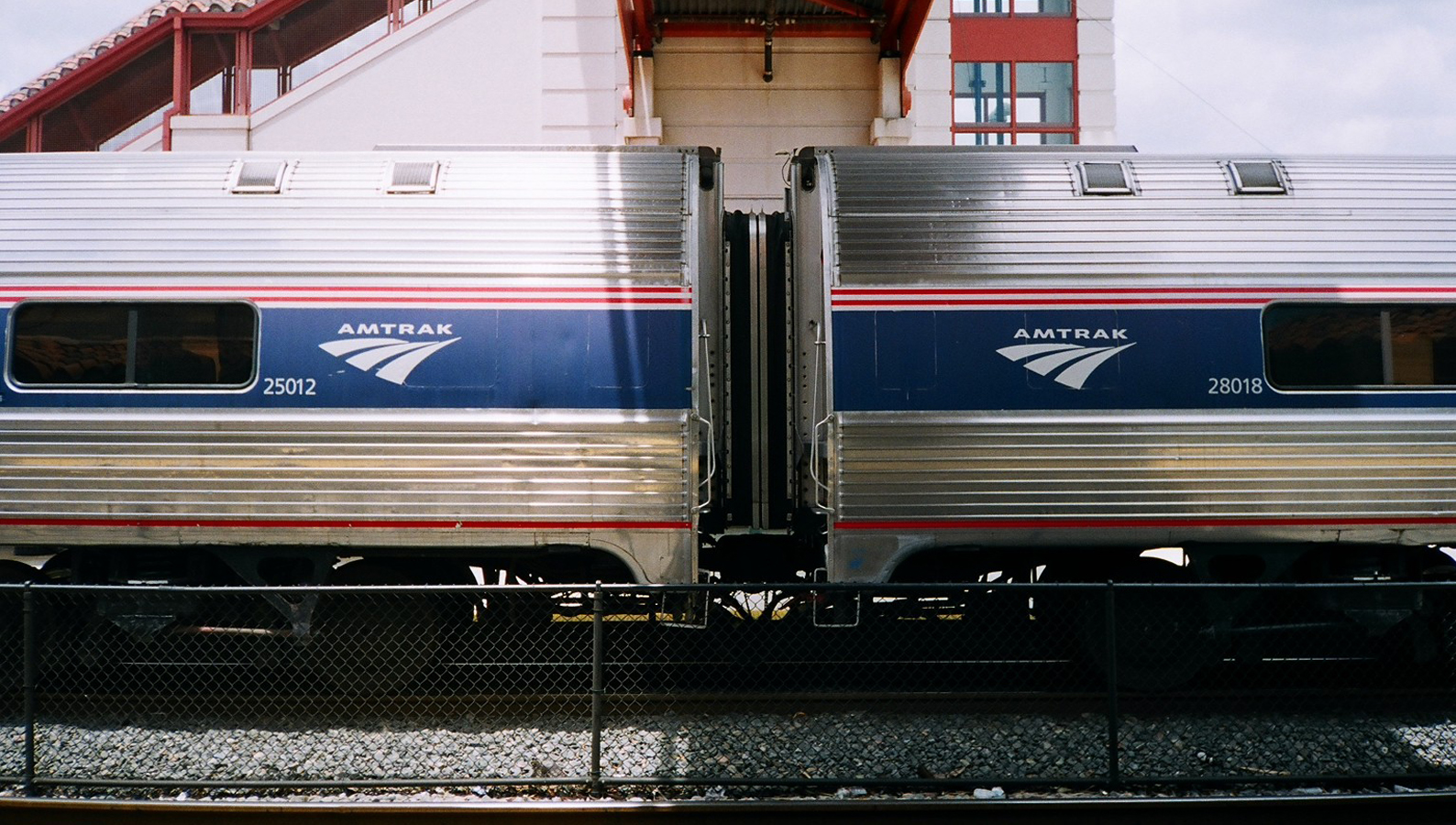Earlier this month, I moved cross-country using Amtrak. This is part two of the story I began here.
After boarding the train in Boston, I found a good seat, and settled in to watch the state go by. I almost never drive, so taking a train like this is a rare opportunity to see what the more remote parts of the country look like.
Just about every time I take a train somewhere I think of The House of the Seven Gables. Most people remember the book as a very, very tedious classic about a house that is spooky – which it is. But near the end, two characters run away from the house and, in their mad dash to escape, they board a train for the first time.
It completely blows their minds. “These railroads,” Clifford expounds, to the great disinterest of everyone else in the car, “are positively the greatest blessing that the ages have wrought out for us.” Trains, he continues, will perfect human society by making us all nomads again.
Transition being so facile, what can be any man’s inducement to tarry in one spot? Why, therefore, should he build a more cumbrous habitation than can readily be carried off with him? Why should he make himself a prisoner for life in brick, and stone, and old worm-eaten timber, when he may just as easily dwell, in one sense, nowhere,—in a better sense, wherever the fit and beautiful shall offer him a home?
It didn’t quite turn out that way, though this hypothetical future has legs — in it you can hear echoes of future travel narratives like Jack Kerouac’s On the Road. Nathaniel Hawthorne wrote The House of the Seven Gables back in 1850, when the railroad still had the fresh, dewy look of new technology. The route that I’m on — the Lake Shore Limited, heading from Boston to Chicago – wouldn’t come into existence until the 1890s.
In its earliest incarnation, the Limited would be a glamorous train with a library car, a parlor car, and an observation lounge. Now it’s a workhorse of a train that seems to be occupied mostly by Mennonites and people traveling on a group discount. At midnight, I’m shaken awake by one of the train employees and told that I need to move. There’s a large group that just boarded the train, and everyone in the car must relocate so the group can sit together.
I get up to find that all the empty seats left are empty for a reason – they’re next to unconscious, heavily snoring men. After a few attempts to find a quiet enough spot, I sit down next to the least snoring one and fall asleep. Around 2 a.m., least-snoring man rolls over onto me. I wake up screaming. Then he starts screaming. We both look at each other awkwardly. Now seems to be the time to go look for another seat.
It’s times like this — groggy, underslept, wishing that I still lived in a world where American trains had the kind of low-cost sleeping berths I’ve seen in old movies, instead of private sleeper-car rooms that cost nearly $200 per night — that I kind of hate trains. But hating trains connects me to the history of this great nation just as much as riding them does. It’s just that most of the people who have hated the railroads did so for different reasons than me.
I remember, once, talking with a reporter who specialized in automobile policy. Another person present was a hard-core railroad enthusiast, and he kept asking her why there had been such a financial push for cars to supplant railroads. Why did we have a Federal Highway Act of 1956? Why did we set up a Highway Trust Fund, when we already had a fairly built-out transportation system? “People forget,” she said, “just how much people back then hated the railroads.”
In 1855, the federal government established a land grant system, where railroad companies were given millions of acres of public land in exchange for building train tracks through said land. It was like a license to print money. The railroad could first sell the land near the tracks to raise the money to build them and then, after they were built, squeeze any farmers or manufacturers who had settled near the railroad so that they could ship their goods to market.
Much of U.S. law that regulates corporations has its origins in bad railroad behavior. The Interstate Commerce Act of 1887, the first nation-wide attempt to regulate private industry in the United States? All about trying to force railroads to make their shipping rates open and intelligible and stop gouging small farmers quite so egregiously. This idea that corporations have many of the same rights in the eyes of the law as individual people? Santa Clara vs. Southern Pacific Railroad, 1886.
Then, in 1893, railroads began to go under. Much as would happen over a century later with the mortgage crisis, not many people riding the railroad gravy train had paused to ask just how much railroad was enough. 156 railroads went into bankruptcy – or about a fifth of the nation’s railroad mileage. America’s freshly industrialized agricultural system collapsed. Farmers, unable to get their crops to market, burned them in the fields, while people in the cities went hungry. When the dust cleared, the railroads were even more consolidated and powerful than before.
It didn’t have to be this way. Richard White’s history, Railroaded, argues that if the federal government had not provided incentives and had instead let railroads develop more slowly, we might never have had a Dust Bowl, or the near-extinction of the bison, or western Indian wars. We might never have had the consolidation of power that created the railroad barons, who White argues were more opportunists than Machiavellian geniuses — less “The Octopus” and more “men in octopus suits.” But then, pouring large amounts of money into new and possibly overhyped technologies is pretty much what we do as a nation, even today. It’s easier for us to imagine affordable Teslas and self-driving cars than it is to build out more public transportation.
And also: the train is pulling into Chicago, the city where the agricultural commodities of the heartland were bought and sold. According to another historian, Roger Horowitz, the mechanized systems that developed in the meat packing plants in Chicago were what inspired the first automobile assembly lines in Detroit.
When I bought my ticket, I was promised several hours to check out Chicago before the next train left. As it is, we’re running so far behind that I feel lucky to make my transfer to the next train, period. But that doesn’t matter. In less than an hour, I’ll be headed to California.
Read on to part three of this story.



